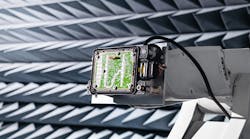Computer Simulation Technology recently released its latest software for simulating electromagnetic effects and interference caused by compact and complex electronic devices. The software breaks down the walls between the mathematical solvers inside it, giving it the power to more efficiently and quickly run through simulations.
That way, the CST Studio Suite 2018 software can simulate complex systems, like connected cars crammed with cabling behind the dashboard and radar systems installed in the bumpers, or sensors implanted under the skin to monitor vitals. It can also simulate radio frequency components like amplifiers and antennas inside them.
Computer Simulation Technology has traditionally competed by loading its tools with more algorithms based on Maxwell’s Equations, which undergird all modern electronic circuits. But over the last few years, the company has reprogrammed its software so that these algorithms can be swapped out and used simultaneously in hybrid simulations.
“CST has long had industry-leading solver technology and in this new release we have leveraged synergies between them resulting in new powerful hybrid simulation methods,” Peter Thoma, managing director of research and development for the Darmstadt, Germany-based firm, said in a statement.
The company said that its tools can simulate electromagnetic and circuit effects at the same time. With the assembly modeler function, the software can also model antennas and other parts pinned onto the complex circuit boards inside smartphones and connected cars. The components can be simulated simultaneously and the effects on each other measured.
The tools introduces new methods of meshing, or projecting triangular cells onto objects to prepare them for simulation, so that even models of the human body can move realistically to simulate breathing. The software also features an optimized filter design tool, allowing faster and more intelligent tuning for cross-coupled filters.
The new software underscores the rivalry between Computer Simulation Technology and its major suppliers in the market for electromagnetics software. One of its competitors, Ansys, recently expanded into software that can realistically playback simulations and that could be used eventually to test how antennas react to interference and dead zones.
Altair Engineering, its other major rival, which has targeted its software at systems like ships and airplanes, recently raised $156 million in an initial public offering of stock. That could give it more financial firepower to compete with Dassault Systèmes, the French software giant that bought Computer Simulation Technology for $242 million in 2016.
